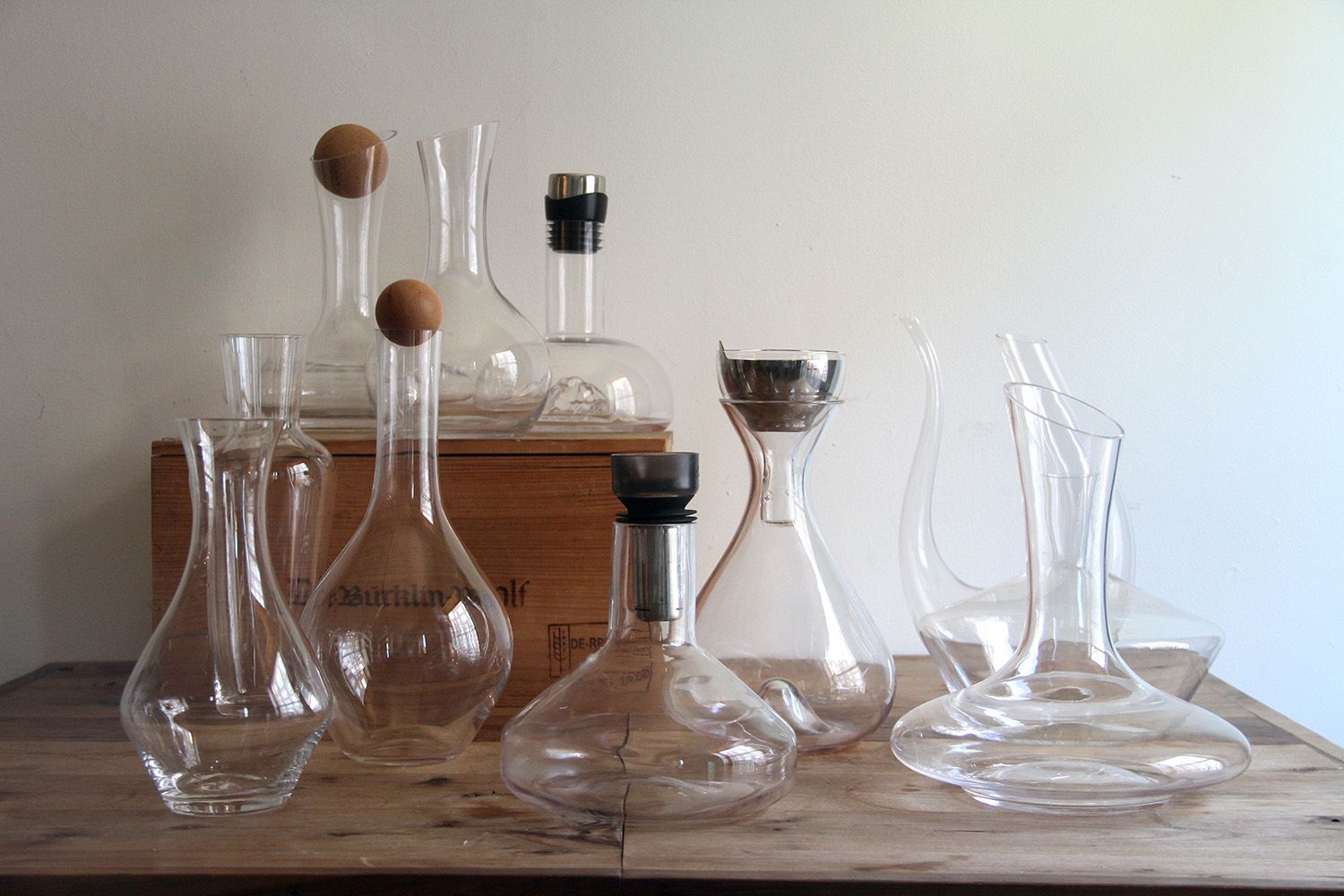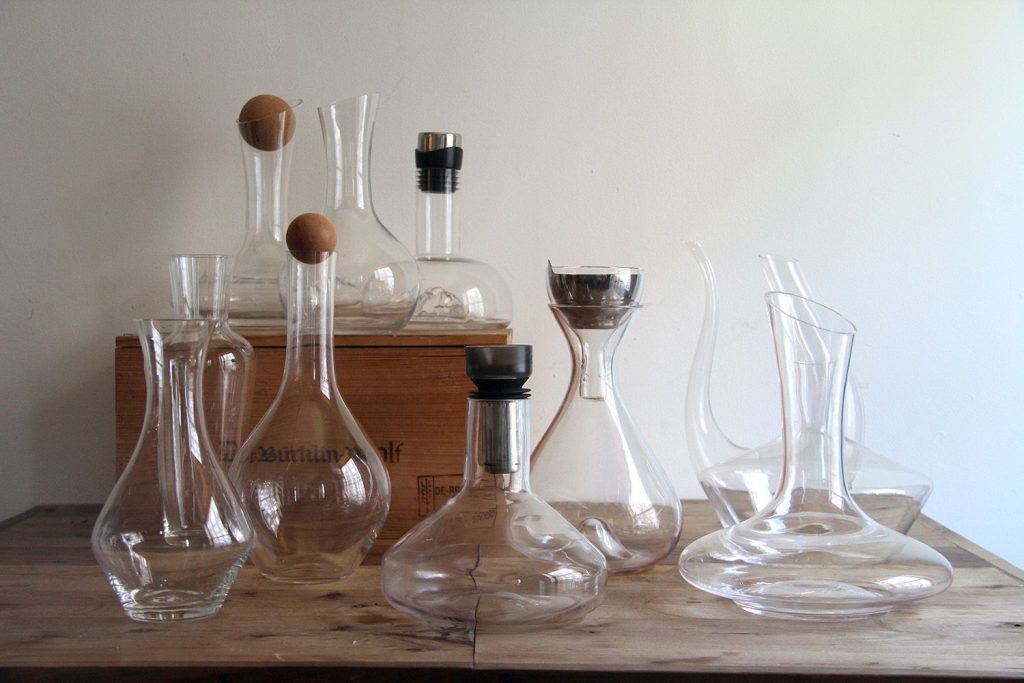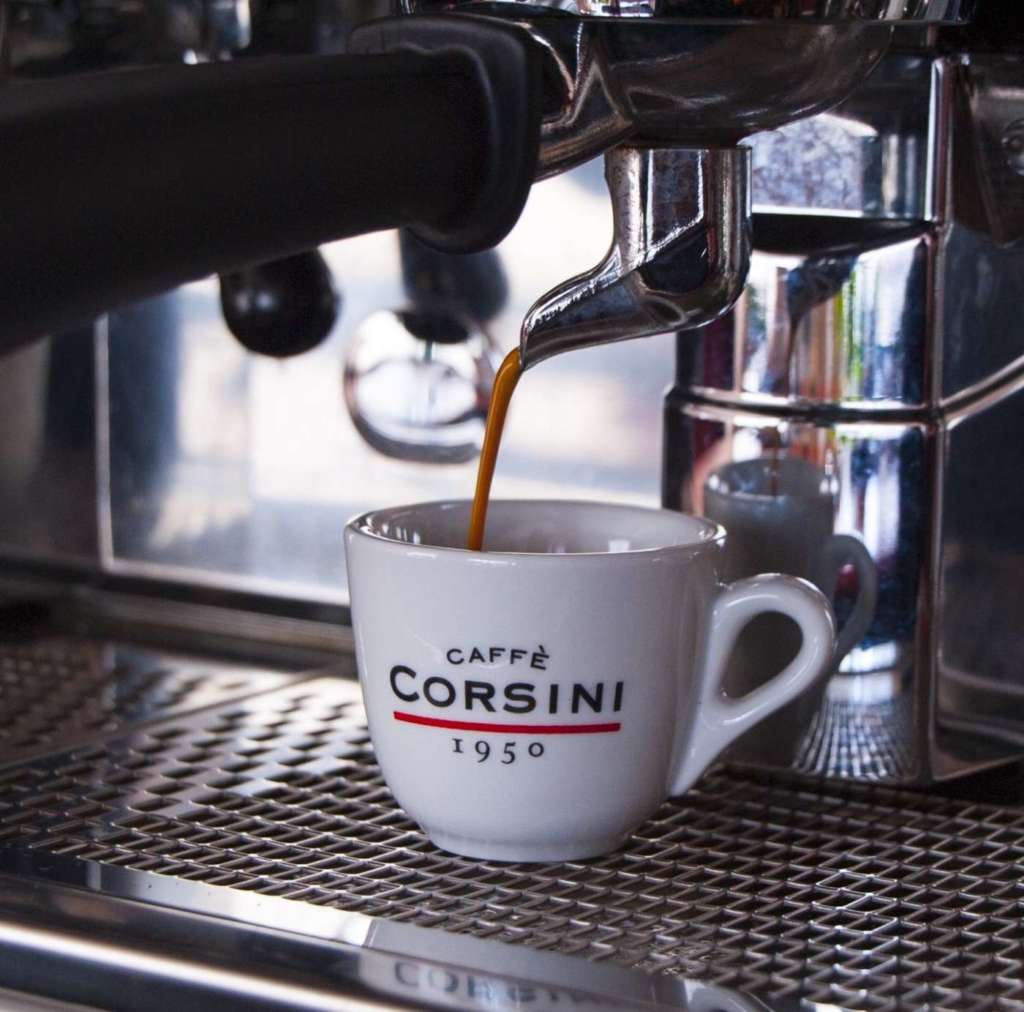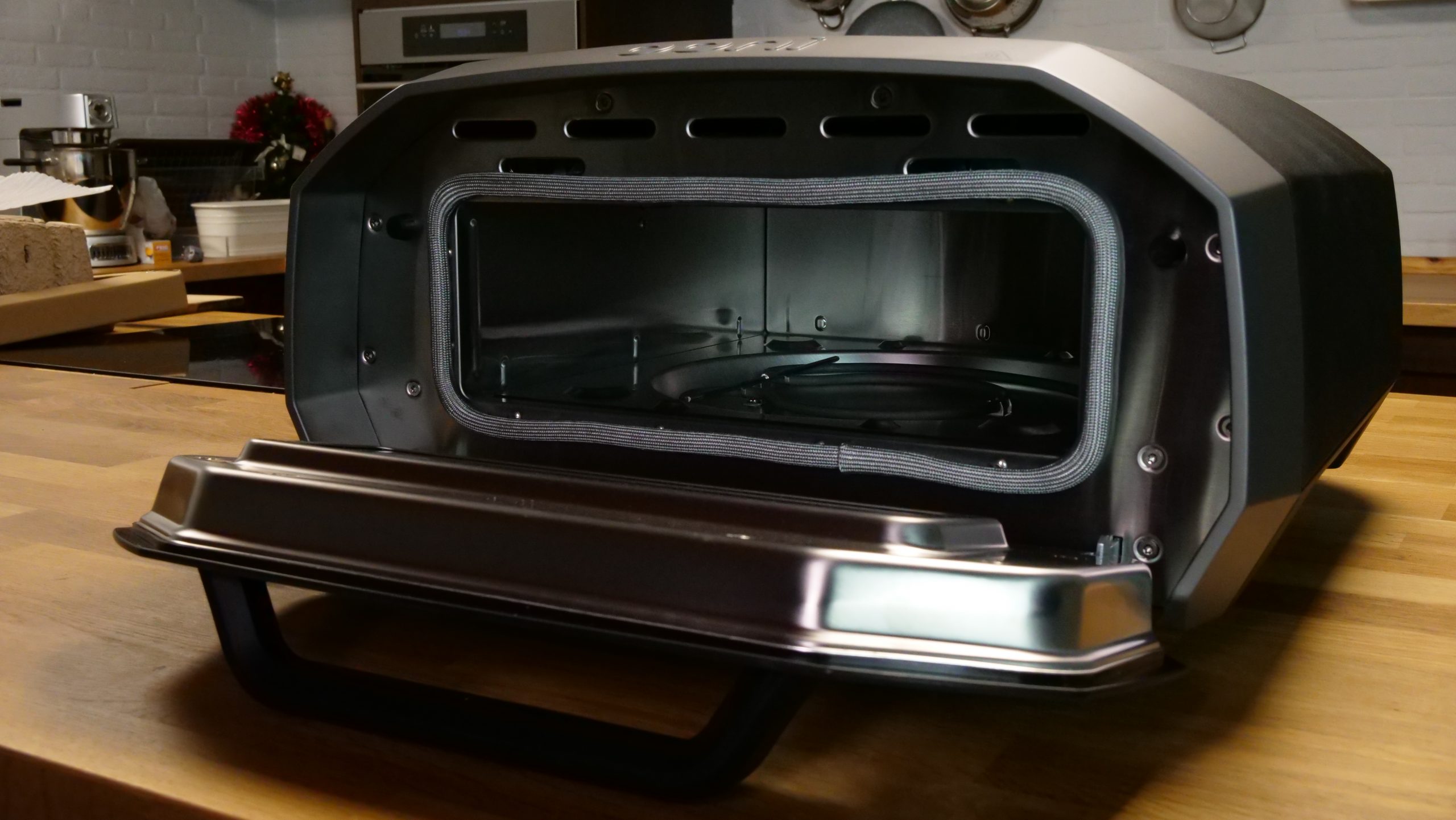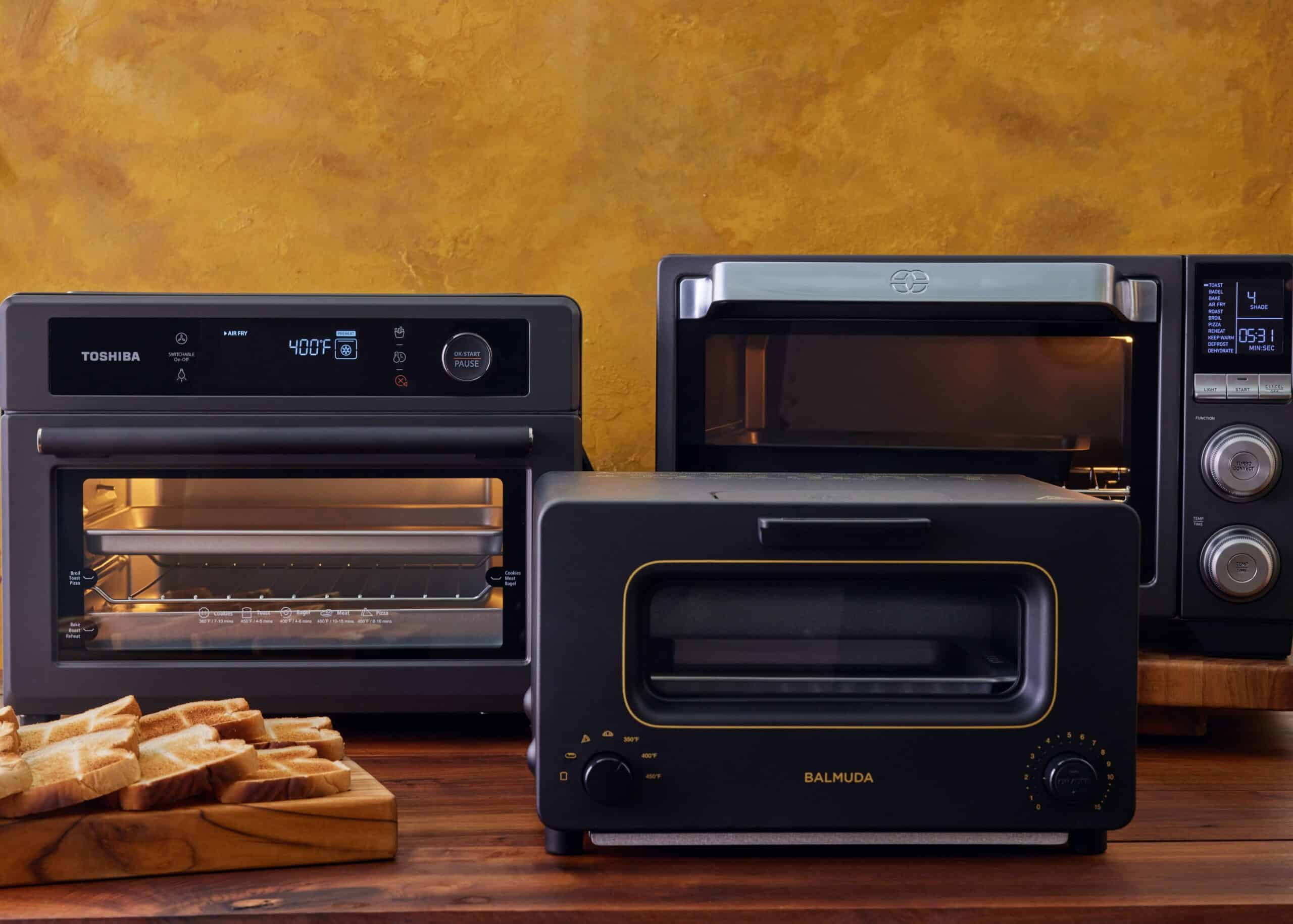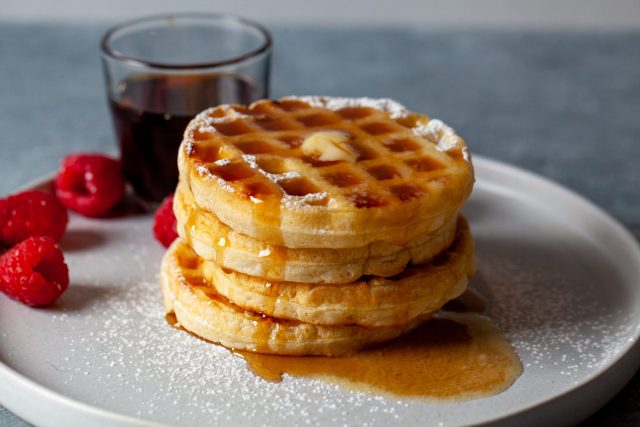Serious Eats / Madeline Muzzi
Have you ever noticed that the second glass of wine tastes better than the first, even if they’re from the same bottle? This could be because the wine has had time to open up. Wine—especially big, bold red wine—needs airflow to unlock its best flavors. In a corked bottle, wine is essentially grounded—it’s locked in its room and it can’t play with its friends (oxygen molecules). Once the cork is removed, the party starts.
Oxygen will begin to flow into a wine bottle the second it’s open. Over time, this airflow will react with the wine, lifting its aromatic compounds into the air where they can be inhaled and appreciated. You can speed up this process by exposing more of the wine to air via a decanter.
Wine bottles are narrow. Even in an open bottle, only a small amount of wine on the surface is exposed to oxygen. Wine decanters create a larger surface area and more airflow so that wine will open quickly. While a wine might take several hours to aerate in a bottle, most red wines need under an hour to open up in a decanter.
With the goal of providing airflow in mind, almost anything can be used as a decanter. Pouring wine into a pitcher, vase, or even the body of a blender would allow it plenty of room to breath. A specially made wine decanter brings a little more elegance to the table. Choose a decanter that you love and can store easily, and serve wine from it directly during dinner. To determine which vessels pair design with functionality, we tested 13 models.
The Winners, at a Glance
The Best All-Purpose Wine Decanter: Made In Decanter
This was a simple, elegant decanter that checked all of the boxes. It allowed wine ample room to breathe, and was easy to pour from.
Also Great: Riedel Cabernet Decanter
Beautiful and delicate (its one con, as this makes cleanup more precarious), this wine decanter was easy to pour into and from. At $54, it’s reasonably priced, too.
The Tests
Serious Eats / Madeline MuzziDecanting Test: We poured one bottle of red into each decanter to see if each vessel could hold 750 milliliters of wine (a standard size bottle). We also assessed how easy it was to decant the wine into the vessel—noting if the wine splashed and if the opening was large enough to allow comfortable pouring. Aeration Test: For each decanter, we observed the aeration method and tested any accessories meant to enhance aeration.Taste Test: For each decanter, we decanted one bottle of wine for an hour, tasting every 15 minutes to note its development. The same type of red wine was used for each decanter. Ease of Pouring Test: We poured four glasses of wine from each decanter. We noted how easy it was to handle the decanter, and looked for any design elements that caused drips or spills. Sediment Test: We filled each decanter with 750 milliters of water, red food coloring, and 2 tablespoons of coffee grounds. We poured four glasses of this liquid, observing how easy it was to identify sediment and stop pouring before the grounds reached the glass.Cleanup Test: We cleaned each decanter according to manufacturer instructions, using included accessories where relevant.
What We Learned
Surface Area Was Key
All it takes to aerate a wine is exposure to oxygen. Decanters with a wide base create a shallow pool of wine with a large surface area. This exposes more of the wine to oxygen at once, and will decrease the time wine needs to breath. Models like the Made In Decanter opened wine more quickly than the tall and narrow Riedel Wine Friendly Decanter. Some models, like the Rabbit Pura Decanting Systemand the Onearf Wine Decanter included bonus features that agitate the wine as it pours. The goal of these features is to force more air through the wine and speed up aeration. During testing, these features did not significantly improve the decanting process. Although they may have started out slightly ahead, the wine still needed to breathe in the decanter to open up fully.
What About Electric Wine Decanters?
Serious Eats / Madeline Muzzi
We tested one decanter that came with an electronic base: the vSpin Wine Aerator. When combined with a magnet, it spun the wine in the decanter and created a vortex. This swirling vortex introduced even more air into the wine and rapidly accelerated aeration. In fact, we model was able to dispel the flavor of alcohol and bring forward fruit flavors in a bottle of red wine in 20 minutes. However, it’s also wicked expensive, at about $250, and because of this we thought it still felt gimmicky. Our advice: for the price, just get a standard decanter.
A Sharper Angle Wasn’t a Better Angle
Serious Eats / Madeline Muzzi
The angle of the spout to the base determines how much you’ll have to tilt the decanter when you pour a glass of wine. Decanters like the Rabbit Pura Decanting System and the Zalto Mystique Decanter feature a sharp angle—almost 90 degrees—between the neck and the base. This seems fine for the first couple of pours, but once you reach the end of the bottle, these decanters need to be turned almost completely upside down to pour a glass. This makes it difficult to control the flow and separate any remaining sediment from the wine. A surprising number of decanters failed this test. Models with sloped sides, like the Vintorio GoodGlassware Wine Decanter, only need to be titled slightly past 90 degrees to pour the very last drop.
Too Narrow Necks Were Too Difficult
We found the size of the decanter’s opening determined how easy it was to decant into. Decanters with very narrow necks, with openings of about one-and-a-half inches, required a super steady hand to pour the wine, or some wine sloshed down the sides. Our favorite models had openings that were two-and-a-half to three inches wide.
The length of the neck also made a difference when it was time to pour. When filled, decanters are on the heavy side. The weight of the wine alone is around 1.65 pounds. Most decanters we tested fell in the 1- to 2-pound range. All together, this makes for a hefty serving vessel. To pour wine from a decanter, you grasp the neck and tilt it. Models with very short necks (two to three inches long, compared to our favorite models’ four to six inches), were difficult to hold and pour.
Tapered vs. Flat Lips
Models with sharp, tapered lips were most effective at creating a steady stream of wine. The taper creates a natural place for wine to flow, and the sharp edge cuts the stream off quickly when the decanter is turned upright. Decanters with a wide flat edge, like the BTäT Decanter with Stand were more likely to cause drips.
Filters and Sediment
Serious Eats / Madeline Muzzi
It’s perfectly normal for a wine to include sediment, especially an older bottle. Sediment is organic material, usually made up of crystalized tartaric acid, yeast cells, and fragments of grape skin. While it might not be pleasant, it’s not harmful if consumed. Professional sommeliers typically remove sediment by sight. When pouring wine into a decanter, they stop just before the sediment flows into the neck of the wine bottle, leaving any unwanted gunk (and a small amount of wine) behind. This process takes some skill. In theory, a decanter with a filter can help those with a less practiced hand achieve the same results. However, the one wine decanter with a filter we were going to recommend became unavailable shortly before publishing and we found other models with filters worked too slowly. Wine ended up backing up in the filter, making pouring difficult.
Plus, when decanting an older wine, a filter alone might not do the trick. According to wine educator Tess Rose Lampert, not even a filter can remove 100% of the fine sediment in aged wine. Instead, for best results, store the bottle upright for several hours before decanting, and stop pouring about 1/2-inch from the bottom.
The Criteria: What to Look for in a Wine Decanter
Serious Eats / Madeline Muzzi
Look for a decanter with a wide base. This will create a large surface area that will quickly aerate your wine. For ease of pouring, consider the spout. Look for a decanter with sloped sides and a thin, angled lip. This will make it easy to pour a steady stream of wine down to the last drop.
The Best All-Purpose Wine Decanter: Made In Decanter
What we liked: This decanter strikes a balance between elegance and strength. The thin, glass edge is easy to control when pouring wine, but the material feels sturdy enough for stress-free hand-washing. The sloped shoulders make it possible to serve an entire bottle of wine without dumping the last glass on the table, and the thin, angled spout gives the pourer enough control to stop the flow if any sediment remains. Compared to other models, the compact size of the Made-In decanter makes for easy storage.
What we didn’t: This is a no-fuss, no-frills model. It’s well-suited for everyday use, but at $89, it’s one of the more expensive models we tested.
Price at time of publish: $89.
Key Specs
Weight: 1-poundMaterial: Crystal glassStated capacity: 1500 milliliters or 50.7 ouncesSerious Eats / Madeline Muzzi
Also Great: Riedel Cabernet Decanter
What we liked: This was a solid, basic decanter. It poured easily and aerated well. It was also very lightweight, which made for easy pouring, even when the decanter was full. It had a wide, stable base and spacious opening that allowed for easy, stress- and splash-free decanting.
What we didn’t: The glass was very thin, and required careful cleaning.
Price at time of publish: $54.
Key Specs
Weight: .75 poundsMaterial: GlassStated capacity: 38 ouncesSerious Eats / Madeline Muzzi
The Competition
Rabbit Super-Aerating Decanter System: We actually really liked this decanter and wanted to name it a winner (it has a filter), but it appears to be discontinued.Le Chateau Wine Decanter: This simple decanter aerated wine well. It lost points because the steep angle of the neck made it difficult to pour the final few glasses.Rabbit Pura Decanting System: This short, sturdy decanter dripped when we poured. The included filter separated sediment, but it drained slowly, making decanting difficult. BTäT Decanter with Stand: The included accessories made cleaning this decanter extremely easy, but the wide, flat edge caused drips when pouring.HiCoup Red Wine Decanter: This large decanter makes a design statement, but the size and thin glass composition made cleaning a challenge.Onearf Wine Decanter and Carafe: This model uses an airlock to decant and aerate wine. Attach a bottle to the airlock, and invert it to drain the wine into the decanter. The airlock was a little unstable, required two hands to operate, and may pop or fizz, spraying wine all over your shirt. Vintorio GoodGlassware Wine Decanter: This solid, simple decanter aerated and separated sediment well. However, the thick glass edge caused a few drips while pouring. vSpin Wine Aerator: If you’re in a huge hurry, this decanter works well. Drop a magnet into the base of the decanter, set it on the included plate, and press the power button. The base rotates and creates a vortex that rapidly aerates the wine. Although effective, we found this product slightly gimmicky. It’s also very expensive.Riedel Wine Friendly Decanter: This tall, narrow decanter was slightly unstable and wobbled on the table. Zalto Mystique Decanter: The wide base of this decanter aerated wine efficiently, but it required a very steep angle to pour. This made serving the last few glasses of wine difficult. Glassvin The Decanter: This decanter is beautifully designed, but was quite heavy when full. The narrow neck made decanting a bottle into the vessel trickier.
FAQs
Why should you decant wine?
Decanting is a way to unlock the best flavors in a glass of a wine. Oxygen helps wine develop—this is the same principle that’s at work when a wine ages. Decanting will bring forward the fruit characteristics in a wine, mellow out the alcohol flavor, and integrate the tannis.
Should you decant white wine?
In general, white wines do not need to be decanted. White wines are full of fresh fruit flavors and aromas, and decanting can diminish those flavors. There’s an exception to this rule—if your white wine tastes a little off, it can be beneficial to decant it. Decanting can help dissipate unwanted flavors and aromas like ethanol or sulfur.
How do you decant wine without a decanter?
You can still aerate wine without a decanter. Try pouring the wine into a pitcher, vase, or even a clean blender to give it some time to breathe. Or you could keep things simple: just remove the cork about an hour before you intend to serve—the wine will slowly open up in the bottle and continue to develop once poured.
What’s the best way to clean a wine decanter?
After use, simply fill the decanter with warm water and swish it around. Avoid using dish soap, as it can leave behind a thin residue and introduce unwanted flavors into your next bottle. If you use your decanter frequently it will require deep cleaning once in a while. Metal beads, a cleaning wand, or paper towels wrapped around a flexible silicone spatula can help remove residue from the bottom of a decanter. Whatever you do, resist the temptation to stick your hand down the neck of the decanter—the odds of getting your hand stuck and breaking the glass are quite high.


